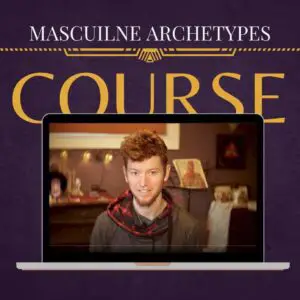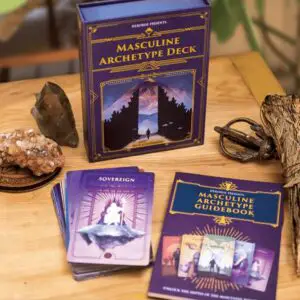Initiation rites are a way to mark the transition from boyhood to manhood. These rites often involve physical tests, such as hunting or fighting, and spiritual rituals that teach important lessons about life. In some cultures, these rites are still practiced today.
The initiation rituals have changed over time but one thing remains constant – it’s an important moment in every boy’s life when he becomes a man. It’s also interesting to see how each culture views masculinity differently. This article explores those differences and provides insight on how to become more masculine through initiation rituals that are still practiced today!
What is a Rite of Passage and Initiation?
A rite of passage is any marker that represents a major change in someone’s life. Many rites of passage can be simple objects, like a car or diploma. Others can be ceremonial, like a sweet 16 or bar mitzvah.
Rites of passage are prevalent in virtually every culture around the world, and many various traditions have very similar characteristics.
For example, rites of passage usually happen around puberty, especially as a way to mark the change from childhood to adulthood. Especially fascinating are masculine rites of initiation, which celebrate the change of a boy into a man. In fact, many anthropologists agree that they are vital in creating social cohesion and identity for developing men.
So what makes them so valuable to male culture, and how do they even work
From Boyhood to Manhood
Rites of passage are critical for male development as new members of society for a number of reasons. Most importantly:
- Rituals help men understand their changing role in the world
- Rituals give us a sense of belonging
- They’re sacred
Rituals help men understand their changing role in the world. Oftentimes, there can be an overwhelming burst of nostalgia and anxiety about jumping into the next phase of life.
This is even more important in older cultures (more on that later) that are rooted in lifestyles of the past. Think about what it would be like to be a young boy in the past. You spend your whole life tucked away, helping out with chores for your family/community, playing or studying if you were fortunate enough to. Then one day, you are suddenly thrust into the responsibility of being a man: Leading your people, defending against possible threats, and being the main source of food and decisions for your community.
Rituals can help make this transition smoother and with less apprehension toward the future.
Rituals give us a sense of belonging – Rites of passage keep us in check with our constantly evolving lives, but they also serve a larger role: Being a part of something bigger than yourself.
By partaking in a traditional community event, you can relate to those around you that have been or will be part of that rite of passage. Even still, an old rite of passage is a source of inspiration when remembering ancestors or historical figures that have participated.
They’re sacred – In the modern age, mass culture and consumerism have taken away the uniqueness and “magic” of day-to-day life. Everything is accessible instantaneously, which makes it less meaningful.
As Bob Dylan put it, “It’s easy to see without looking too far that not much is really sacred.” A rite of passage has specific rules of how and when they occur, and they’re often a “once-in-a-lifetime” experience, which makes one’s life feel more meaningful for participating in them.
Elements of a Rite of Passage
Although there are massive differences in different cultural rites of passage, most anthropologists agree that they all share three distinct phases:
- Separation – To start off the rite, a man is stripped of the comfort of his childhood experience. Some ethnic groups send boys alone into the wilderness for a period of time. Others change the boy’s appearance, from shaved heads to tattoos or even genital mutilation. Think of this as the beginning of boot camp in the military. All senses of individual possession, appearance, and expression are stripped to create a new identity and feeling of disconnect from the past stages of life.
- Transition – Usually, rites of passage have some sort of task that must be completed before the participant is considered “mature”. Boys are usually taught some sort of information necessary to be successful men for their community, and they have to prove their skill and knowledge in a test. The physical and mental stress felt here makes the rite of passage more valuable, because it takes personal endurance and maturity. Plus, shared experience of the same pain makes it easier for men to relate to one another in the future.
- Reincorporation – Here, the new man has completed whatever feats necessary to be a mature adult, and he is brought back to his community as such. In folk culture (especially small tribes) this is celebrated with a large party/meal. The man is also introduced to his fellow men as an equal, in the same way, that members of the military “join the fleet” or “make the ranks”.
HINDU UPANAYANA (SACRED THREAD CEREMONY)
The sacred thread ceremony is an ancient hallmark of Hindu culture to commemorate them as mature enough to fully respect and follow Hindu teachings.
Occasionally, females have been honored, but the ritual is focused on male development. Some sects of Hinduism start the process with “alms” wherein the boy gives meals and gifts to the family to show his independence and ability to forge for himself.
The focal point of the Upanayana is the Janoi, three strands are woven together into a thread. Each strand represents pure deed, pure mindedness, and pure speech respectively. The thread is worn over the shoulder in a similar fashion to a rifle strap, and a holy prayer (called a mantra) is recited when it is taken on or off.
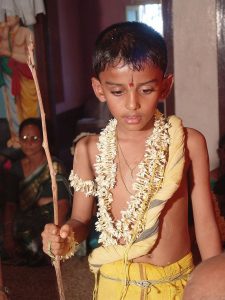
Upanayana is almost always performed by the age of 16, and oftentimes much earlier. This is due to its significance to learning in Hindu culture. This rite of passage is considered to reflect the beginning of a boy’s formal education. The teacher is also an important part of the rite because it means the student is ready for school (which often becomes where they live).
The Sateré-Mawé
The Satere-Mawe tribe are a people located deep in the amazonian rainforest with a particularly painful rite of passage to symbolize the journey to manhood: Being stung by bullet ants, the most powerful bug sting known to humanity as of right now.
The ant is aptly named, as many describe the sting as a similar sensation to getting shot. Considered more brutal than any other animal defense mechanism, the sting is known to be not only excruciating but long. The feeling is said to ebb and flow for up to a full day.
So what does a proper Satere-Mawe stinging ritual look like?
First, thousands of bullet ants are collected (which sounds like a rite in its own right!) and dipped in an intoxicating plant brew that leaves them in a temporary state of hibernation.
After that, they’re hand-picked by size and woven into leaves to make gloves. This is the hardest part because the ants are all individually arranged so that their stinger is facing the inside of the glove.
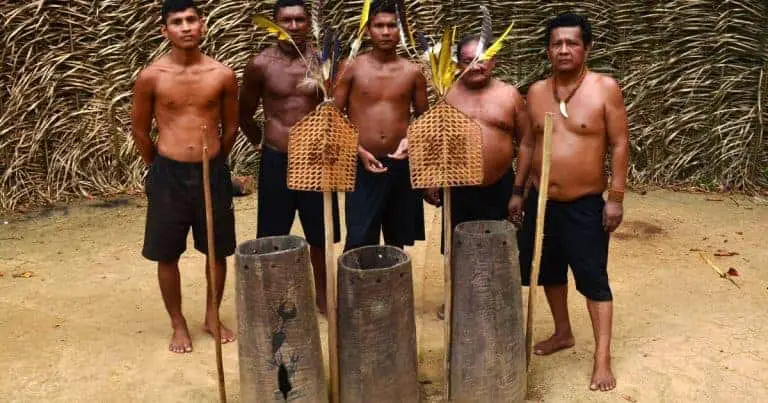
Once the ants wake up, the boy is to wear them for at least 300-500 seconds while facing the wrath of hundreds of simultaneous stings. The pain doesn’t come off with the gloves though. It’s not uncommon for the stinging to produce seizures, delirium, or even death. On top of this, boys are expected to do this at least a dozen times before being considered a “man”.
The “initiation” of the Samburu
Like many cultures, the Samburu people of northern Kenya practice an intense ceremony for boys becoming men at the age of 15. Young children (or Layeni) aren’t active members of Samburan work and society, so this is a very important liminal period.
The initiation ceremony represents the switch from a child to an active participant in the means of production and leadership of the populace.
First, the boy’s head is shaved and he is given brand new shoes. He is then met by his mother, who covers him in sheepskin, blackened by grease and smothered in coal. After this, an elder comes to circumcise the boy. Here, it is expected that males show no emotion or fear, to prove they are mature enough for manhood.
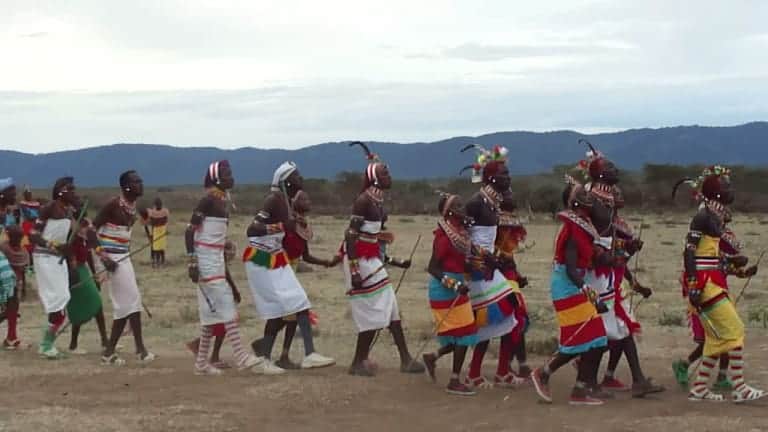
After this, he is sent to his mother’s home to recover (usually for a few weeks). Here, he’ll be greeted with a feast and many gifts, the most important being a bow and arrows. He will be taught how to use the bow to hunt and defend himself, the most important job of a fully matured warrior.
Finally, the new warrior returns from hunting and is presented with one last ceremony, signifying his successful transition into manhood. He is presented with a milk-soaked bird feather, and a bull is sacrificed. At this pivotal moment, the new warriors, or Morans must demonstrate their strength by keeping the bull upright and covering themselves with its blood.
Aboriginal Walkabout
When comparing modern “rites of passage” to those that have been practiced since ancient times, they seem much more practical.
Isn’t it better for someone to get a diploma just for going to school or extra responsibility at ages 18 and 21?
It usually seems like ancient rites of passage aren’t really helpful or constructive events, but the Aboriginal people of Australia are an exception. Their ancient “walkabout” tradition involves young men between the ages of 10 and 16 (whenever they show signs of puberty) taking a six-month journey through the wilderness…alone.
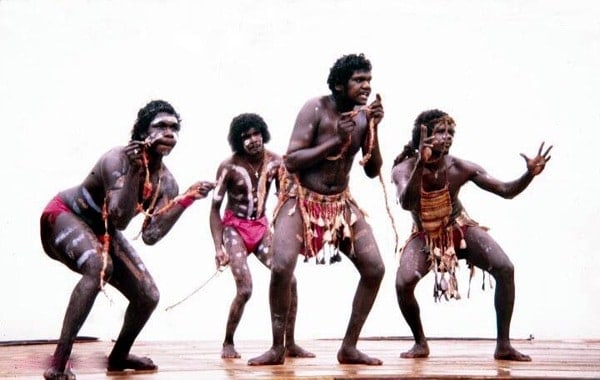
A boy could only prove himself to be a man if he could survive out in nature by himself. The remarkable thing about the aboriginal rite of passage is that there’s less focus on a superstitious way to prove maturity and more on demonstrating real skills.
In the years leading up to an adolescent’s walkabout, they would learn practical tips from elders and “secrets” from the tribe about how to survive. When they are finally about to go on the journey, they are tattooed and pierced on the nose/ears. Then, they are stripped of all clothes except a loincloth and sent out to be alone.
In rare cases, teeth are ripped out to increase the identity change and pain of the experience. Once out, the young tribesman has to catch all of his own food, build all of his own shelters, and find freshwater himself. This is no easy task, and participants are known to trek thousands of miles before finally heading home from the trek.
The walkabout works wonders as an ancient form of hands-on learning for useful life skills, but it also served a much more important purpose: The discovery of one’s self. When these young people are out alone, they have time to be alone and reflect on their past and future.
Through a rite of passage like this, teenagers learn wisdom and courage.
In Conclusion
Initiation rites are a fascinating and important part of human culture.
They tell us about the importance we place on manhood, as well as what masculinity means in different parts of the world.
